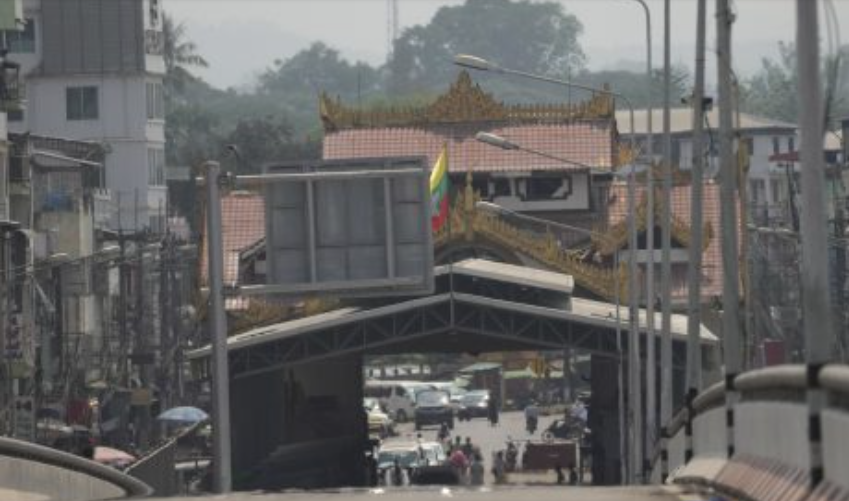Understanding the Myawaddy Conflict (GS Paper 2, IR)

Introduction:
- Myanmar's recent reclaiming of Myawaddy, a crucial node in the trade route with Thailand, follows a brief seizure by anti-government forces in mid-April.
- This event underscores regional tensions fueled by the involvement of ethnic armed groups and pro-democracy fighters.
The Role of the Border Guard Force (BGF):
- Amidst the conflict, the Border Guard Force (BGF) emerges as a significant player. Aligned with the military government but operating with considerable autonomy, the BGF utilizes the turmoil to expand its regional dominance.
- Moreover, it oversees a vast criminal network involved in gambling, drug trade, and trafficking along the Thai border, amplifying the complexity of the situation.
Historical Context: Myanmar's Conflictual Journey:
- Myanmar's post-independence history reflects ongoing struggles to maintain control over its diverse territories.
- Deep-rooted conflicts between the majority Bamar ethnic group and various minority groups have continually challenged state authority and contributed to territorial instability.
Post-2021 Coup Situation:
- The aftermath of the 2021 coup witnessed a surge in anti-military sentiment, leading to widespread opposition and unrest.
- Pro-democracy movements, in collaboration with ethnic groups, have united against military rule, further weakening state authority.
- This instability has created fertile ground for the escalation of trans-border illegal activities, exacerbating the situation.
Attraction of External Players:
- As Myanmar's crisis spills beyond its borders, external powers are increasingly drawn into the fray.
- China, in particular, has deepened its involvement to stabilize its frontier, while the US has extended significant aid to support pro-democracy movements.
- This intervention underscores the geopolitical significance of Myanmar's crisis and its implications for regional stability.
India's Strategic Silence:
- Despite the profound implications for India's internal and external security, New Delhi's response to the Myanmar crisis has been notably restrained.
- The prevailing policy bias in favor of the Myanmar army, which is no longer capable of securing India's interests, warrants a reassessment.
- It is imperative for India to engage with the National Unity Government and local forces along the border to navigate the evolving situation effectively.
Conclusion: Crafting a Clear Policy:
- The Myanmar crisis highlights the urgency for India to adopt a decisive stance.
- Merely fortifying the border is insufficient in addressing the multifaceted challenges on India's eastern frontier.
- India must formulate a coherent and proactive policy approach, engaging with relevant stakeholders to navigate the complexities of the evolving situation and safeguard its strategic interests effectively.


